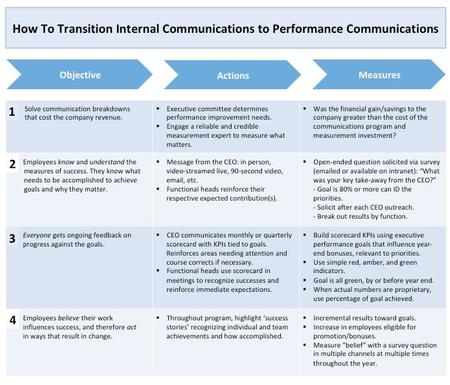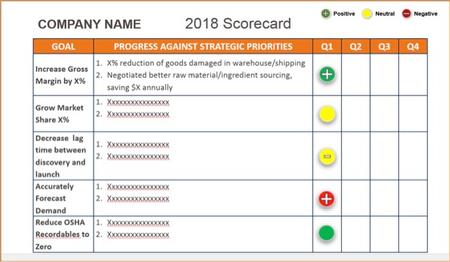
Consider this premise: Every business problem in existence can be traced to a communication breakdown. Communication breakdowns might include lack of information, the wrong information, mixed messages, no response, slow-moving information, etc. I’ve tested this statement in my role as a corporate internal communicator and as a communications consultant to C-level executives. I’ve found it to be absolutely accurate. So what? So those with responsibility for internal communications can and should be using their positions to help solve business problems for their organizations or clients. To do this, internal communicators need to shift their attitudes and functions from being a line item cost to a source of value creation, producing measurable business performance outcomes. By doing so, they will earn their spot as invaluable contributors at the proverbial table. Let’s define a business problem as either any situation causing financial loss, an obstacle to increased revenue, or some other failure of business performance. Then, under the premise we began with, every failure of business performance can be traced to a communication breakdown. So there’s your opportunity to do both important work and prove its value: Fix the comms and you improve business performance. Or, put another way: Any communication solution you apply to a problem will create a gain in some measure of business value. What kind of financial gain? With my own clients I’ve seen internal communications programs drive the following business performance results: So how does an internal communicator rise from the traditional role of producing outputs (company-wide emails, intranet content, e-newsletters, executive videos, etc.) to the role of producing business performance outcomes? The role redefinition is not without challenges, but the guidelines below address how to respond to those obstacles while building a reputation as a value-creator within your organization. Essentially, it requires a transition from internal communications to performance communications. To redefine your role you must change how you measure your success: from opens, views, likes and other communication responses to operating and or financial improvements. The key is to express your progress in measures that directly correlate to business performance or improvement. The majority of internal communications functions can benefit from the four-objective process outlined in the figure below. These guidelines embrace the KUBA theory: Employees need to Know, Understand, Believe first, then they will Act in ways that result in improved performance. I know from experience that the more employees see success, the more they begin to believe in success. Think of the sports analogy: winning teams believe they can win. The more they win, the more confident they become. In our communications application, won games are analogous to “incremental results toward goals.” The single most essential element in performance communications is the scorecard, similar to what many today refer to as a dashboard. What differentiates this scorecard from the typical dashboard is: Here is a sample scorecard template: The scorecard needs to be seen by all employees and it needs to come from the CEO. I’ve done it several ways: After the CEO presents it, it gets posted on the intranet with a very brief recap of the comments delivered by the CEO when it was presented. That way, employees can go back and look at it any time. Note that the executive team reviews, discusses, and assigns the colors (representing positive, neutral, and negative) to the scorecard, based on performance data that is routinely captured in each function. I’ve seen color assignments change during this meeting. Following presentation of the scorecard by the CEO, it becomes the basis for functional, departmental, or site meetings. Company leaders can and should use the scorecard to provide additional context around how their respective organizations helped achieve specific goals, or where they need to step up effort. Engagement of the CEO in communicating the scorecard increases executive interaction with the internal communications function. But that’s just the beginning: when scorecards are turning green and business performance is improving, CEOs and others in the executive suite will be seeking out those communicators who can help spot communication breakdowns and bring solutions. Those communicators will be recognized as value creators. A final note: Not all communicators have measurement expertise, and so collaboration with a measurement pro is recommended. Another advantage of using a measurement pro is using their leverage to help ensure the timely receipt of appropriate financial and operations data from the internal sources that collect such data, for inclusion in the scorecard. This blog was originally published by Paine Publishing.Every business problem is a communicator's opportunity
Measure business performance rather than communications performance

The importance of the scorecard

Using the scorecard: presentation by the CEO is key
How Should Companies Approach Reputation Building in the AI Era?
August 15, 2025
Short Cuts: Tariffs Lurk, Marketers Lead
June 14, 2025
